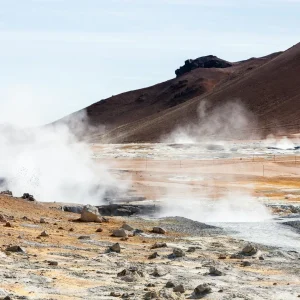Wind energy is a fascinating and increasingly popular form of renewable energy that harnesses the power of the wind to generate electricity. While many people are familiar with the concept of wind turbines dotting landscapes, there are some surprising facts about wind energy that may not be common knowledge. In this article, we’ll delve into five unexpected aspects of wind energy that will leave you amazed and informed.
1. The Dance of Turbines: A Beautiful Synchronization
Have you ever watched a field of wind turbines and noticed how they seem to move in unison? It’s not just your imagination – wind turbines are strategically placed and programmed to synchronize their movements. This synchronization, often referred to as the “dance of turbines,” is not only aesthetically pleasing but also serves a practical purpose. By aligning their blades to catch the wind at the most opportune moments, turbines can maximize energy production while minimizing wear and tear.
2. Efficiency in Motion
Unlike some other forms of renewable energy, such as solar power, wind energy can be generated even when the sun isn’t shining. This means that wind turbines can continue to produce electricity day and night, as long as there’s sufficient wind. Additionally, modern wind turbines are equipped with advanced technology that allows them to adjust their blade angles and orientations in real-time, further optimizing their efficiency.
3. Harnessing the Power of High Altitudes
While traditional wind turbines are a common sight across many landscapes, there’s a whole new frontier emerging in the world of wind energy: airborne wind turbines. These innovative devices harness the stronger and more consistent winds found at higher altitudes, where they can generate even more electricity than their ground-based counterparts. By utilizing kites, drones, or other airborne structures, these turbines have the potential to revolutionize the wind energy industry.
Flying High for Clean Energy
The concept of airborne wind turbines may sound like something out of science fiction, but it’s quickly becoming a reality. Companies and researchers around the world are investing in the development of these high-altitude systems, recognizing their potential to provide clean and renewable energy on a large scale. As technology continues to advance, we can expect to see more of these futuristic turbines dotting the skies in the years to come.
4. Wind Energy: A Boost for Local Economies
Beyond its environmental benefits, wind energy also has the power to stimulate local economies in unexpected ways. The development and operation of wind farms create jobs in manufacturing, construction, and maintenance, providing a much-needed economic boost to communities around the world. Additionally, many landowners lease their land to wind developers, earning steady income while still being able to use the land for other purposes such as farming or ranching.
5. Winds of Change
The economic impact of wind energy extends far beyond the initial construction phase. Once operational, wind farms continue to generate revenue through electricity sales, which can then be reinvested into the local community. This influx of capital can support schools, infrastructure projects, and other essential services, helping to build stronger and more resilient communities for the future.
Conclusion
Wind energy is more than just a breeze – it’s a powerful force driving positive change across the globe. From the synchronized dance of turbines to the promise of airborne technology, the world of wind energy is full of surprises and opportunities. By harnessing the power of the wind, we can create a cleaner, more sustainable future for generations to come.
FAQs
How do wind turbines work?
Wind turbines convert the kinetic energy of the wind into mechanical power, which is then used to generate electricity.
Are there any downsides to wind energy?
While wind energy is clean and renewable, some people have raised concerns about its impact on wildlife and landscapes.
Can I install a wind turbine at home?
Small-scale wind turbines are available for residential use, but they may not be practical or cost-effective for everyone.
What happens on days when there’s no wind?
Wind farms often have backup power sources or are connected to the larger electrical grid to ensure a consistent supply of electricity.
Is wind energy expensive to implement?
The cost of wind energy has decreased significantly in recent years, making it increasingly competitive with traditional fossil fuels.




